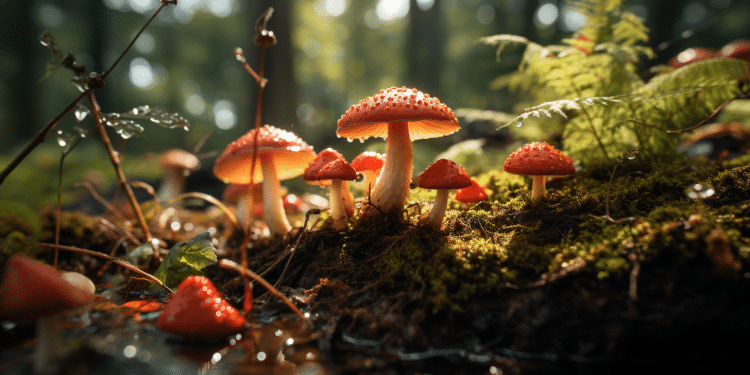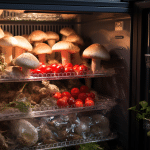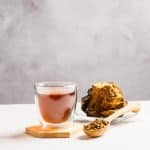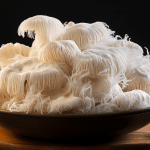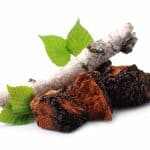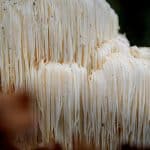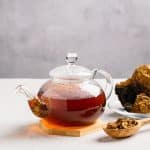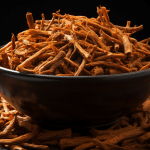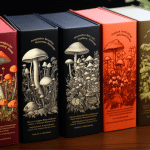What is Mushroom Spawn?
Spawn is the living culture of the fungal organism, called the mycelium, growing on a substrate. It provides the basis for any mushroom growing operation. Think of it as the equivalent of the seeds for mushroom farms.
Unlike seeds, however, mushroom spawn is grown with selected genetics and clones to consistently produce a specific strain of mushroom. This is analogous to the way that humans grow apples from grafted wood, rather than planting apple seeds. Grafting guarantees a specific, selected genetic mix will result in a consistently tasty variety of apples. The master culture is maintained on petri dishes of agar in our lab.
Do Mushrooms Grow From Spores?
However, mushrooms grown from wild spores in the wild are a successful tale of an idiosyncratic game played by every single species of mushroom. Mushrooms prefer to make thousands of spores, a scattered-stem method of reproduction. The more spores that are floating around in the wind, scattered by rainfall, moved around by insects and other organisms, the better the chances that they will find a suitable growing environment. The vast majority of dispersed spores never will lead to the growing mushroom fruit-body. Most high quality cultivators of mushrooms select productive edible fungus strains in order to maximize success rates for the individuals using our spores!
What is the difference between grain, sawdust, and plug spawn?
Professional mushroom growers make three different types of mushroom cultures (and a lot of species of mushrooms for each!).
Plug Spawn – This is the kind of spawn that you see in our small bags of spawn sold in gardening centers, co-ops, and farmers markets. They are wooden plugs made locally, which we have grown mycelium for mushrooms. To use the pockmarked seed, you must have access to fresh cut hardwood logs. Holes are cut into the logs, the plug spawn is then driven through the holes, and hot wax is then brushed on top of the plugged holes to seal the logs.
Inoculating with plug spawn is an excellent way to introduce yourself to the pleasures of growing mushrooms outside. It is easy to use, requires no tools other than a hand-drill, and is perfect for smaller projects.
The trade-off is that this method is slower than using wood chips for seed, and that the rate of colonization is slower than you’d expect. We have done blue oyster, golden oyster, Italian oyster, snow oyster, Lions mane, reishi, shiitake, chestnut, chicken of the woods, and chickens of the woods spawn in plugs.
Learn more: Mushroom nutrition information
Sawdust spawn – Used in the same manner as the plug spawn, but requires the inoculation tool to be placed into logs. Sawdust spawn is cheaper than plug spawn, is more robust, and will colonize more quickly. This is the kind of spawn used on most smaller farms, and by those who want to get inoculated outside with more than a couple logs.
If you are planning to inoculate logs over the course of several years, then the tool costs are offset by the cheaper spawn costs.
Grain spawn – Grain spawn is used in commercial, indoor mushroom growing. To speak to high quality growers like those who make the products we feature on this website, production is done indoors, using grain spawn (which is USDA certified organic). Grain spawn is not appropriate for contaminating outside poles, it is intended for use by growers in the house or contaminating straw beds.
The grain spawn is produced using millets and wheat grains, and is USDA certified organic.
Can You Make Your Own Mushroom Spawn?
People frequently reach out to me asking whether or not they can make their own DIY mushroom starters at home. The answer is YES, it is absolutely possible!
When we started looking into this process, I wanted to raise my own brood, be in full control of the whole process. I had an entire lab set up and clean room, and would be spending hours every week growing my own fungi spawn. You can learn more via the video below:
There were definitely a few benefits to that. It is cheaper, allows you to learn more about the way that the mycelium forms and works, and gives you greater control over the types of mushrooms that you are able to grow. But growing your own mushroom starters has plenty of drawbacks, too.
It takes a lot of time to learn. You have to learn an entirely new process.
Growing a robust, healthy mushroom brew on a consistent basis is a science, and requires a lot of precision work to do well. You need lots of additional equipment, and you need a sterile environment. All in all, the equipment needed to create a sterile space for producing mushroom spawn can eventually cost you thousands of dollars, depending on how professional a set-up you are looking to make.
Learn more: Mushroom substrate
Creating your own mushroom spawn might not be reliable for quite some time, until you have got the hang of it. Expect to experience setbacks from mold pollution and other causes as you are still refining the process.
It takes up a significant amount of your time each week. Growing spawn for mushrooms takes several steps. First, you need to grow the starter cultures in test tubes or in a petri dish, which will eventually spread out on an agar plate.
From there, you will chop up pieces of the agar and drop them onto the grains. From your first grain production, you need to replicate several times more, making larger amounts of grains. Each step in this process takes time, and you need to keep it going with a steady loop, too, if you want to consistently make mushrooms at a constant rate.
Just on that front, that adds up to a lot to your workload. I found that I was better off getting spawns from others, and instead I focused on my own farm tasks. Plus, getting fungus from a vendor cuts right through to the fun part of the process, actually growing mushrooms!. Playing scientists and cloning mushrooms using a Petri dish may sound interesting at first, but it honestly gets boring pretty fast. So, due to all these drawbacks, we now source all its mushroom spawns from one vendor.
And this is something that we also recommend to others, especially if they are starting out.
Updated 10/3/2022
